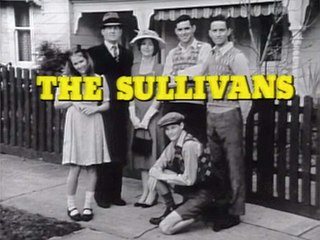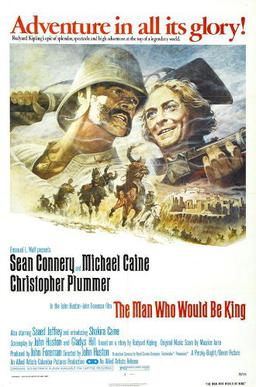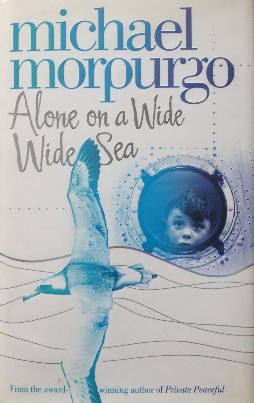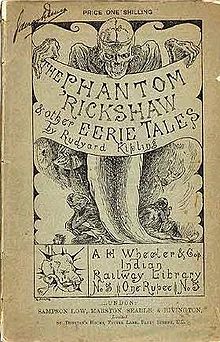The Phantom 'Rickshaw (horror story)
After an affair with a Mrs. Agnes Keith-Wessington in Simla, the narrator, Jack, repudiates her and eventually becomes engaged to Miss Kitty Mannering. Yet Mrs. Wessington continually reappears in Jack's life, begging him to reconsider, insisting that it was all just a mistake. But Jack wants nothing to do with her and continues to spurn her. Eventually Mrs. Wessington dies, much to Jack's relief. However, some time thereafter he sees her old rickshaw and assumes that someone has bought it. Then, to his astonishment, the rickshaw and the men pulling it pass through a horse, revealing themselves to be phantoms, bearing the departed ghost of Mrs. Wessington. This leads Jack into increasingly erratic behavior which he tries to cover up by concocting increasingly elaborate lies to assuage Kitty's suspicions. Eventually a Dr. Heatherlegh takes him in, supposing the visions to be the result of disease or madness. Despite their efforts, Kitty and her family become increasingly suspicious and eventually call off the engagement. Jack loses hope and begins wandering the city aimlessly, accompanied by the ghost of Mrs. Wessington.
The Strange Ride of Morrowbie Jukes
One evening Morrowbie Jukes, an Englishman, is feeling a bit feverish and the barking of the dogs outside his tent is upsetting him. So he mounts his horse in order to pursue them. The horse bolts and they eventually fall into a sandy ravine on the edge of a river. He awakens the next morning to find himself in a village of the living dead, where people who appear to have died of, for instance, cholera, but who revived when their bodies were about to be burned, are imprisoned. He quickly learns that it is impossible to climb out because of the sandy slope. And the river is doubly treacherous with quicksand and a rifleman who will try to pick them off. He recognizes one man there, a Brahmin named Gunga Dass. Gunga has become ruthless, but he does feed Jukes with dead crow. Eventually Jukes discovered that another Englishman had been there and died. On his corpse Jukes finds a note explaining how to safely get through the quicksand. After Jukes explains it to Gunga, Gunga confesses to murdering the Englishman for fear of being left behind. They plan their escape for that evening, when the rifleman will be unable to see them in the dark. When the time to escape arrives, Gunga knocks Jukes unconscious and escapes alone. When Jukes awakes he is found by the boy who kept his dogs and is helped to escape by means of a rope.
The Man Who Would Be King
The narrator, a journalist, meets two colorful characters, Daniel Dravot and Peachey Carnahan, while traveling. Later, they seek him out at his printing press in Lahore to look at books and maps about Kafiristan. He then plays witness to their vow to each other to become kings of Kafiristan, a venture which he sees as ill-advised. Two years later, Carnahan returns and informs the narrator that he and Dravot indeed reached Kafiristan. While there, they were seen as gods and eventually Dravot was made king. The two men taught the Kafiristanis military tactics and how to use rifles. Eventually, Dravot decided to take a Kafiristani woman as his wife, but, in her terror, she bit him. Upon seeing him bleed, the priests realized that he was not a god and the Kafiristanis immediately sought to kill Dravot and Carnahan. One clan chief, whom they called "Billy Fish", helped them to escape, but they eventually were caught and Dravot was dropped from a rope bridge into a gorge to his death. The Kafiristanis crucified Carnahan, but let him go when he was still alive the next morning, and he slowly made his way back to Lahore over the next year. The narrator puts Peachey in an asylum, where he dies soon thereafter. Dravot's severed head and golden crown, which Carnahan was carrying with him when he visited the narrator, are not found among his possessions.

Joseph Rudyard Kipling was an English novelist, short-story writer, poet, and journalist. He was born in British India, which inspired much of his work.
This is a bibliography of works by Rudyard Kipling, including books, short stories, poems, and collections of his works.

"The Man Who Would Be King" (1888) is a story by Rudyard Kipling about two British adventurers in British India who become kings of Kafiristan, a remote part of Afghanistan. The story was first published in The Phantom 'Rickshaw and Other Tales (1888); it also appeared in Wee Willie Winkie and Other Child Stories (1895) and numerous later editions of that collection. It has been adapted for other media a number of times.

Rudyard Kipling's The Jungle Book, also known as The Jungle Book, is a 1994 American adventure film co-written and directed by Stephen Sommers, produced by Edward S. Feldman and Raju Patel, from a story by Ronald Yanover and Mark Geldman. It is a live-action adaptation of the Mowgli stories from The Jungle Book (1894) and The Second Jungle Book (1895) by Rudyard Kipling. Unlike its counterparts, the animal characters in this film do not talk.

The Sullivans is an Australian period drama television series produced by Crawford Productions which ran on the Nine Network from 15 November 1976 until 10 March 1983. The series tells the story of a fictional average middle-class Melbourne family and the effect that the Second World War and the immediate post-war events had on their lives. It covers the period between 1 September 1939 to 22 August 1948. It was a consistent ratings success in Australia, and also became popular in the United Kingdom, the Republic of Ireland, the Netherlands, Gibraltar, Greece and New Zealand.

Bernard's Watch is a British children's drama series about a young boy who could stop time with a magical pocket watch. The show was created by Andrew Norriss and was produced for seven series that aired on CITV from 14 November 1997 to 31 March 2005.

The Man Who Would Be King is a 1975 adventure film adapted from the 1888 Rudyard Kipling novella of the same name. It was adapted and directed by John Huston and starred Sean Connery, Michael Caine, Saeed Jaffrey and Christopher Plummer as Kipling. The film follows two rogue ex-soldiers, former non-commissioned officers in the British Army, who set off from late 19th century British India in search of adventure and end up in faraway Kafiristan, where one is taken for a god and made their king.
My Boy Jack is a 1997 play by English actor David Haig. It tells the story of Rudyard Kipling and his grief for his son, John, who died in the First World War.

Alone on a Wide, Wide Sea is a book by Michael Morpurgo, first published in 2006 by HarperCollins. It was inspired by the history of English orphans transported to Australia after World War II. The book's title is taken from a line in The Rime of the Ancient Mariner.
"Miss Youghal's Sais" is a short story in Rudyard Kipling's collection Plain Tales from the Hills (1888). It is the first appearance in book form of the fictional character Strickland.
"The Rescue of Pluffles" is a short story by Rudyard Kipling. Its first appearance in book form was in Kipling's first collection of short stories, Plain Tales from the Hills (1888); it was first published in the Civil and Military Gazette on November 20, 1886. It centres on Mrs Hauksbee, and begins
Mrs. Hauksbee was sometimes nice to her own sex. Here is a story to prove this; and you can believe just as much as ever you please.

Under the Deodars is a collection of short stories by Rudyard Kipling.

Wee Willie Winkie and Other Child Stories is a collection of short stories by Rudyard Kipling.

Old Friends and New is a series of short stories written by Sarah Orne Jewett. It was published in The Atlantic Monthly in seven installments – one short story in each volume – in 1878. In 1879, the short stories were compiled and published by Houghton, Osgood and Company. The stories from Old Friends and New are clear examples of the local color movement, with descriptions of the peaceful, rural settings. They all take place in New England in the late nineteenth century.

"Fairy-Kist" is a short story by Rudyard Kipling. It first appeared in Maclean’s Magazine in America in 1927. It was after published in 1928 in England in the Strand Magazine, illustrated by C. E. Brock. It finally came out in book format in 1932, in the collection Limits and Renewals.
Catharine, or the Bower is an unfinished novel from Jane Austen's juvenilia. With its realistic setting and characters, it represents something of a bridge between her early burlesques and the soberer novels that made her name.

The Means of Escape is a 2000 short story collection by Penelope Fitzgerald, published shortly after her death. It was first issued as a series of eight stories, most of which were first published between 1975 and 1998.

Ghostly Tales for Ghastly Kids is a 1992 children's fantasy horror book of cautionary tales written by British author Jamie Rix and is the second book in the Grizzly Tales for Gruesome Kids series. It was published by André Deutsch and contains 15 short stories.
This page is based on this
Wikipedia article Text is available under the
CC BY-SA 4.0 license; additional terms may apply.
Images, videos and audio are available under their respective licenses.













